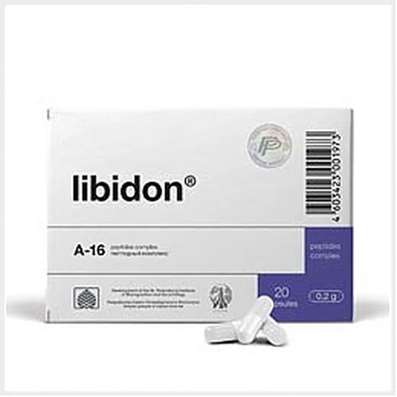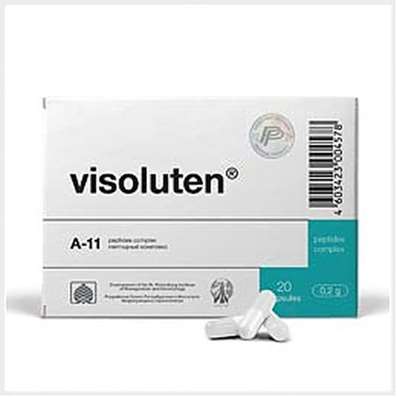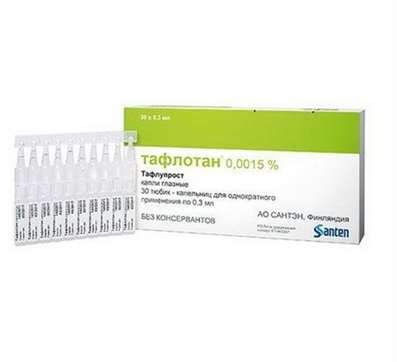Instruction for use: Progesterone (Progesteronum)
I want this, give me price
Pharmacological group
Estrogens, gestagens; Their homologues and antagonists
Antineoplastic hormonal agents and hormone antagonists
Nosological classification (ICD-10)
D25 Leiomyoma of the uterus
Fibroids of the uterus
E28 Ovarian dysfunction
Dysfunction of the sex glands, Abnormal ovarian function, Non-functioning ovaries, Primary dysfunction of the ovaries, Decreased function of the sex glands, Estrogen insufficiency
E91 * Diagnosis of endocrine system diseases
Diagnosis of hypogalactia, Diagnosis of thyroid suppression, Diagnostic test of thyroid function, Diagnosis of hypothyroidism, Diagnosis of disorders of gonadotropic pituitary gland function, Thyroid scintigraphy test, Diagnostics of pheochromocytoma
N60.1 Diffuse cystic mastopathy
Benign cystic change in mammary glands, Cystic fibrosis mastopathy, Fibrous-cystic mastopathy, Pre-cancerous condition of mammary glands, Benign mammary gland disease, Benign breast tumor
N64.4 Mastodinia
Mastalgia, Soreness of the mammary glands, Cooper's disease
N64.8 Other specified diseases of the breast
N80 Endometriosis
Endometrioid endometriosis
N91.2 Amenorrhea, unspecified
Diagnosis of amenorrhea, Lack of menstrual cycle, Congenital amenorrhea
N91.5 Oligomenorrhea, unspecified
Pronounced oligomenorrhea
N92.1 Abundant and frequent menstruation with an irregular cycle
Metrorrhagia, Dysfunctional metrorrhagia
N94.3 Premenstrual tension syndrome
Pronounced premenstrual syndrome, Menstrual psychosomatic disorder, Menstrual syndrome, Premenstrual tension, Premenstrual status, Premenstrual period, Premenstrual syndrome, Menstruation syndrome
N94.6 Dysmenorrhea Unspecified
Pain during menstruation, Functional disorders of the menstrual cycle, Menstrual cramps, Emmeniopathy, Pain during menstruation, Painful menstrual irregularities, algomenorrhea, algomenoreya, Pain smooth muscle spasm, Pain spasm of smooth muscles (renal and biliary colic, intestinal spasms, dysmenorrhea), Pain spasm of smooth muscles of internal organs (kidney and biliary colic, intestinal spasms, dysmenorrhea), Disalgomenoreya, dysmenorrhea, Dysmenorrhea (essential) (Exfoliative), menstrual disorder, menstruation painful, metrorrhagia, Violation of the menstrual cycle, Menstrual irregularities, Prolaktinzavisimoe menstrual disorders, Prolaktinzavisimoe menstrual dysfunction, Pain spasm of smooth muscles of internal organs, Spasmodic dysmenorrhea, Primary disalgomenoreya
N94.8 Other specified conditions associated with female genital organs and the menstrual cycle
Menstruation disorder, Amenorrhea due to prolonged courses of antibiotic therapy, Prolactin-dependent disorder of the menstrual cycle, Prolactin-dependent disorder of menstrual function
N95 Menopause disorders and other disorders in the perimenopausal period
Period of perimenopausal
N95.1 menopausal and menopausal status of women
Atrophy of the mucosa of the lower genital tract, caused by estrogen deficiency; Vaginal dryness; Autonomic dysfunction in women; gipoestrogeniya state; Deficiency of estrogen in menopausal women; Degenerative changes of the mucous membrane in the menopause; Natural menopause; an intact uterus; climacteric; Menopause women; Menopause in women; menopausal depression; Climacteric ovarian dysfunction; Menopause; Climacteric neurosis; Menopause; Menopausal symptoms complicated psychovegetative; Climacteric syndrome; Climacteric vegetative disorders; Climacteric psychosomatic disorder; menopausal disorders; Menopausal disorders in women; menopausal condition; Climacteric vascular disorders; Menopause; Menopausal vasomotor symptoms; menopausal period; Lack of estrogen; Feeling the heat; Pathological menopause; perimenopause; menopause; postmenopausal; Premature menopause; premenopauznom period; tides; hot flashes; flushing in the Meno and postmenopausal; Hot flashes / hot flashes in menopause; Heart attack during menopause; Early menopause in women; Disorders of menopause; climacteric syndrome; Vascular complications of menopause; Physiological menopause; Estrogendefitsitnye state; premature Menopause
N96 Habitual miscarriage
Miscarriage habitual, Habitual abortion, Habitual miscarriage
N97 Female infertility
Female infertility in anovulation, Hyperprolactinemic infertility, Hyperprolactinaemia with infertility, Endocrine infertility, Infertility due to hypothalamic-pituitary dysfunction, Infertility infertility, Infertility, Infertility on the background of hyperprolactinaemia, Functional infertility, Marriage is infertile, Infertility of ovarian genesis, Stimulation of the growth of a single follicle
O20.0 Threatened abortion
Abortion threatening, threatening miscarriage, Spastic conditions with the risk of abortion, Threatened miscarriage in the first trimester of pregnancy, The threat of miscarriage, threatened abortion, The threat of miscarriage, Threatened spontaneous miscarriage
Z31.1 Artificial insemination
Fence of egg, ICSI (Intra Cytoplasmic Sperm Injection), Controlled ovarian stimulation, Controlled superovulation, Controlled superovulation in artificial insemination, Treatment of insemination, Fertilization artificial, Premature ovulation, The IVF program, The program of in vitro fertilization, Superovulation
Code CAS57-83-0
Characteristics of Progesterone
White or almost white crystalline powder, odorless. Almost nerastvorim in the water; Soluble in alcohol, acetone and dioxane; It is difficult to dissolve in vegetable oils and very easily - in chloroform. Stable in the air. Molecular weight 314.47.
Pharmacology
Pharmacological action - progestagenic.
It is a hormone of the yellow body. By binding to receptors on the surface of cells of target organs, it penetrates into the nucleus, activates DNA (deoxyribonucleic acid) and stimulates the synthesis of RNA (ribonucleic acid).
Promotes the transition of the mucous membrane of the uterus from the proliferative to the secretory phase, creates the necessary conditions for the implantation of a fertilized egg, reduces the sensitivity of the uterus to oxytocin and relaxes its muscles (tocolytic effect). Stimulates lipoprotein lipases, increases fat stores, increases basal and induced insulin levels, glucose utilization, accumulation of glycogen in the liver, aldosterone production, causes hypoazotemia and hyperaosuria; Suppresses the production of hypothalamic factors releasing LH (luteinizing hormone) and FSH (follicle-stimulating hormone) and, accordingly, biosynthesis of gonadotropic hormones of the pituitary gland.
In the tissues of the mammary gland reduces the permeability of capillaries, reduces swelling of the connective tissue stroma, dependent on the phase of the menstrual cycle, inhibits proliferation and mitotic activity of the duct epithelium (when applied in the form of a gel).
When ingestion, intravaginal (capsule), sc, and / m injection quickly absorbed. Cmax for oral administration is achieved after 1-3 hours, with intravaginal application in 2-6 hours. Binding with proteins is 96-99%, mainly with albumin (50-54%) and transcortin (43-48%). In the liver it is converted mainly into pregnanediol and pregnanolone, which are then conjugated to form glucuronides and sulfates. It is excreted by the kidneys (50-60%) and with bile (more than 10%); Progesterone metabolites excreted with bile are excreted with feces and may undergo enterohepatic recirculation.
When applied to the skin in the form of a gel for external use is practically not absorbed and does not enter the systemic bloodstream.
The efficacy of vaginal gel application is indicated in the treatment of secondary amenorrhea due to a lack of progesterone, as well as in reproductive technologies to compensate for the lack of progesterone in egg donation.
Use of Progesterone
Capsules: for oral administration - premenstrual syndrome, fibrocystic mastopathy; Premenopause, menopause, incl. Premature, postmenopause - as a progestational component of hormone replacement therapy (HRT) in combination with estrogens; Intravaginal - HRT with non-functioning ovaries in the absence of progesterone (egg donation), support for the luteal phase during preparation for in vitro fertilization, support for the luteal phase in the spontaneous or induced menstrual cycle, prevention of habitual and threatening miscarriage due to gestagenic failure, endocrine infertility, prevention of uterine myoma , Endometriosis.
A solution in oil: amenorrhea, oligomenorrhoea, algodismenorea (on the basis of hypogenitalism), anovulatory metrorrhagia, endocrine infertility (including insufficiency of the yellow body), the threat of abortion, the diagnosis of estrogen secretion.
Gel for external use: mastodynia, mastopathy.
Contraindications
Hypersensitivity. Capsules: marked violations of the liver function, a tendency to thrombosis, acute forms of phlebitis or thromboembolic diseases, vaginal bleeding of unknown genesis, incomplete abortion, porphyria.
Solution in oil: breast and genital cancers (for monotherapy), expressed violations of liver function, pregnancy (II and III trimester), propensity to thrombosis, acute forms of phlebitis or thromboembolic diseases, vaginal bleeding of unknown genesis, abortive miscarriage, porphyria.
Restrictions for use
Capsules: diseases of the cardiovascular system, incl. Arterial hypertension, bronchial asthma, severe renal dysfunction; Diseases of the central nervous system, incl. Depression, epilepsy, migraine; diabetes; Pregnancy (II and III trimester), breast-feeding.
Solution in oil: diseases of the cardiovascular system, incl. Arterial hypertension, bronchial asthma, severe renal dysfunction, central nervous system diseases, incl. Depression, epilepsy, migraine; Diabetes, ectopic pregnancy, breast-feeding.
Side effects
Allergic reactions.
Capsules: drowsiness, transient dizziness (1-3 h after administration), menstrual cycle disorders (shortening, intermediate bleeding).
Solution in oil: thromboembolism (including pulmonary embolism and cerebral vessels), thrombophlebitis, thrombosis of retinal veins, increased blood pressure, edema, calculary cholecystitis, cholestatic hepatitis, drowsiness, headache, depression, apathy, dysphoria, impaired vision, nausea, vomiting, decreased appetite, galactorrhea, changes in body weight, hirsutism, alopecia; Increase, pain and tension of the mammary glands; Decreased libido, menstrual cycle disorders (shortening, intermediate bleeding); Pain in the injection site.
Interaction
Reduces the effectiveness of the drug (drug), stimulating the smooth muscles of the uterus, anabolic steroids. With simultaneous use with barbiturates, the action of progesterone decreases.
Precautions
During treatment attenuated focus (be careful when driving vehicles and other classes of potentially hazardous activities requiring psychomotor speed of reaction).

 Cart
Cart





